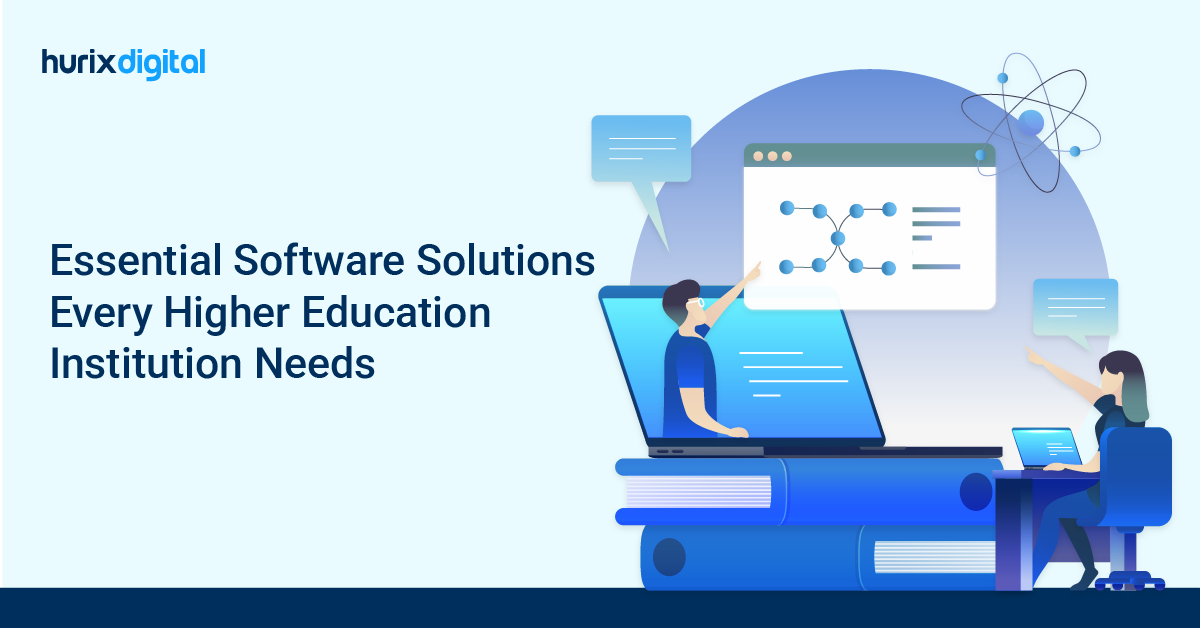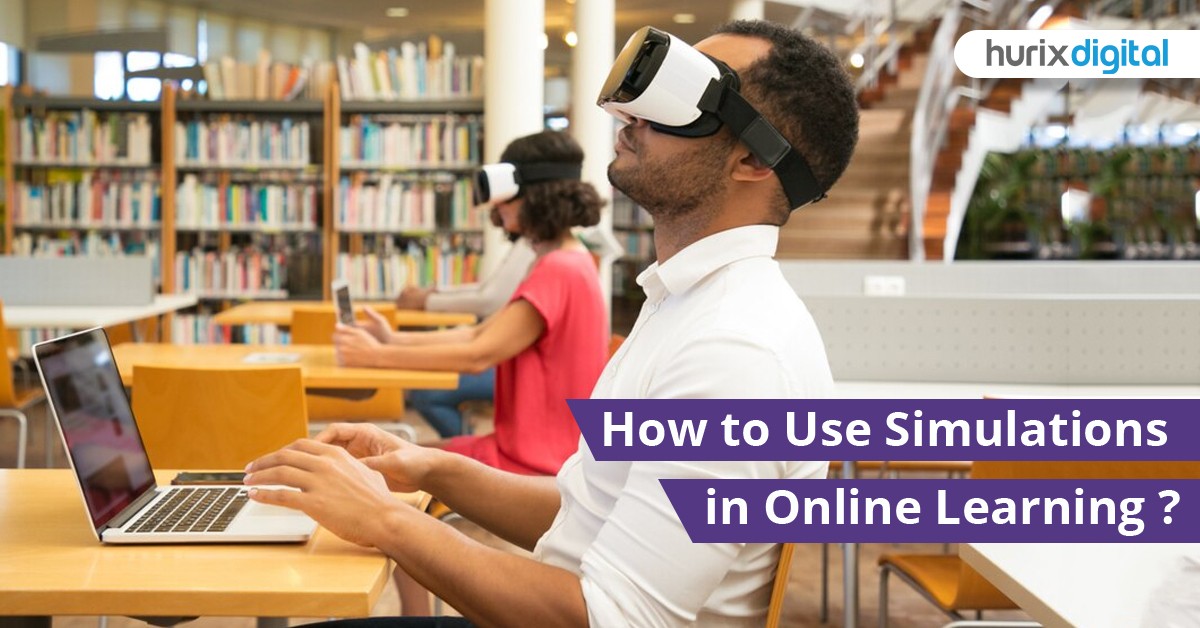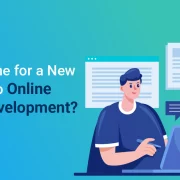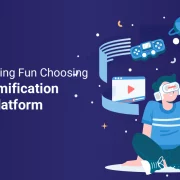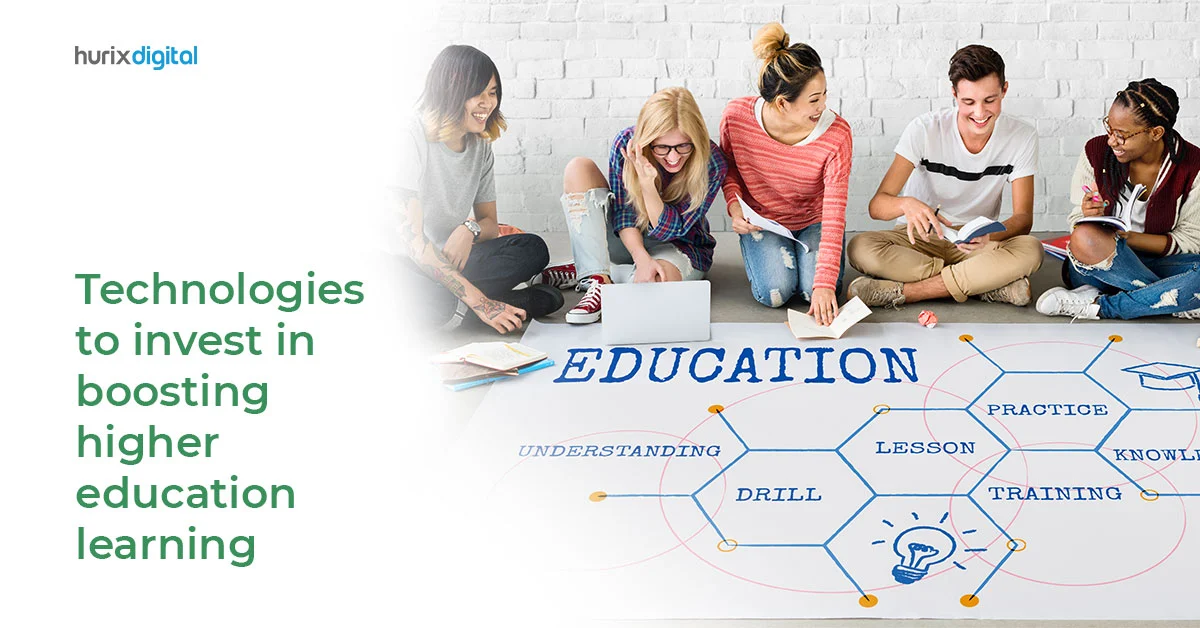
What Is AI Workflow Automation & How to Leverage It?
The learning and education sector has seen drastic developments and unprecedented changes in the post-COVID-19 world. Online education is growing rapidly across the globe, and technological innovations are changing how education is imparted every day.
Table of Contents:
- Ideal Technological Investments for an Education Technology Company
- Digital Learning Technologies
- Modes of Instruction
- Support Services
- Instructor Development
- Benefits of Technology in Higher Education
In such a dynamic environment, every education technology company must constantly update the technologies used to design, develop, and implement different educational programs.
According to a study by Holon IQ, education technology is slated to grow 2.5 times from 2019 to 2025 and is expected to reach $404B in total global expenditure. Therefore, investing in the right kind of higher education technology is pertinent for companies to reap the benefits of technology in higher education.
Ideal Technological Investments for an Education Technology Company
In the current educational landscape, utilizing learning technologies across different digital platforms is pretty much the norm and is a critical factor for e-learning modules.
As the various methods of imparting education continue to evolve, every education technology company needs to update itself continually. Here are some emerging technological practices that will support the growth of higher education in the near future.
Digital Learning Technologies
Digital learning technologies are constantly evolving, and every education technology company needs to invest in newer avenues of digital learning and teaching solutions.
These investments may involve significant expenses in infrastructure to support emerging technologies. Here are some common digital learning technologies.
1. Learning Management System (LMS)
An LMS integrates all course materials, learning modules, exercises, and activities. In addition, it allows for online discussions, group activities, grading assignments, etc.
2. Multimedia
Multimedia can include video, audio, and other kinds of interactive content. Some multimedia apps can also be embedded in the LMS for more convenient usage.
3. Collaborative Applications
Cloud-based or online applications that allow students to collaborate with their instructors and peers are essential elements that every education technology company should invest in.
4. Synchronized Technologies
Synchronization between different applications and media is necessary to conduct real-time online sessions. In addition, this synchronization helps maintain interactivity in online classes.
5. Emerging Technologies
Emerging technologies, such as artificial intelligence (AI), augmented reality (AR), extended reality (XR), and virtual reality (VR), are expected to enable more engaging teaching methodologies in the coming years.
Modes of Instruction
Online education and e-learning modules can be imparted through various instructional modalities. If a course is available in several modalities, students can choose whichever methodology suits them the best.
1. Classroom Teaching
In this method, the teaching occurs in a classroom, where in-person interaction between the students and the instructors is held. In addition, the use of technology enhances teaching.
2. Online Teaching
The entire teaching process occurs online in this modality and is imparted using various technologies.
3. Hybrid
This is a blend of the classroom teaching method and online teaching. Students have the flexibility to choose either option. Sometimes, they may even have the option of choosing both.
Support Services
Some support services are essential for the successful digital transformation of the educational landscape.
1. Technology Support Staff
Additional technology support staff members must be hired whenever an institution updates its educational technologies. The increase in online education has made 24/7 technology support for students and instructors mandatory.
2. Instructional Designers
Every education technology company needs to hire instructional designers to support the instructors in effectively implementing e-learning modules.
3. Student Support Services
Students need dedicated academic support to access online libraries and other resources. They also need support for registration, course advice, and consultations.
Instructor Development
Teachers and instructors must undergo regular training and development to keep up with the changing educational landscape.
When instructors had to quickly move to online teaching from classroom teaching during the pandemic, many didn’t have adequate training to make a smooth transition.
Providing adequate training opportunities and resources to the faculty is essential to help them improve their technological skills.
1. Learner Development
Students and learners across age groups and social classes have had to quickly adapt to the rapidly changing world of education in the past few years since the pandemic hit.
While contemporary learners have access to opportunities and resources that were inconceivable just a few years ago, they also face various challenges in a highly digitized world.
Learners should ideally be trained in basic technology and life skills, including computer and internet skills, self-discipline, time management, teamwork and collaboration, stress management, self-motivation, community building, etc. It is also important to provide students with adequate mental health support.
2. Organizational Policies
More organizational policies must be developed and implemented to support online teaching and e-learning modules.
Responsibilities of teachers, teaching load, enrolment criteria for students, evaluation criteria, and many other factors must be considered while formulating new organizational policies.
Organizations should also examine the funding models for different instructional modalities. Another important issue to be considered is the inequalities in students’ ability to access technological resources.
Benefits of Technology in Higher Education
In the modern world, technology is indispensable in higher education. The use of technology has enhanced the education and learning processes in numerous ways. Here are a few benefits of technology in higher education.
- Personalized learning opportunities
- Increased collaboration among peers
- Improved levels of learner engagement
- Incorporates different learning styles
- Improved teacher productivity
- Access to unlimited resources
- Better accessibility and inclusion
- Enhanced creativity in learners
- Automation and online assessment
How Can Hurix Help You?
Do you own an education technology company and plan to invest in the latest technological innovations to boost higher education? There are numerous options for you to consider, each with its own pros and cons.
Working with a professional company to implement the best technological updates for your organization can make the process more effective. Hurix Digital has over 20 years of experience helping education technology companies choose the best e-learning practices for their students.
Contact our experts to understand your needs better and implement the best higher education technologies to serve your students more effectively.

Currently serving as the Vice President of Technology Delivery Operations at HurixDigital, a prominent global provider of digital content and technology solutions for publishers, corporations, and educational institutions. With over 16 years of experience spanning EdTech and various domains, I hold certification as a SCRUM Product Owner (CSPO). My expertise includes operations, finance, and adept people management skills.


